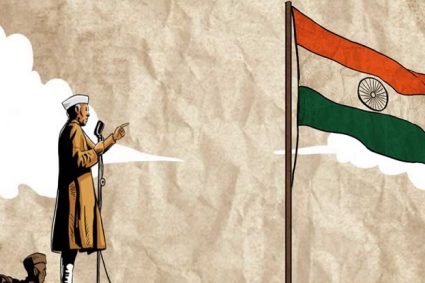
In the vast tapestry of India’s rich cultural heritage, few garments have woven themselves as deeply into the fabric of tradition as the sari. Embodied in its very name, “sari” – meaning “strip of cloth” in Sanskrit – is much more than a simple garment. For countless generations, Indian women (and a few men) have embraced this magical unstitched attire, elevating it to the status of a national symbol, an ambassador of timeless design and craftsmanship, and a reflection of the diverse and colorful tapestry of India’s 29 states.
The history of the sari can be traced back to antiquity, with its first mention dating to the Rig Veda, a sacred Hindu text from 3,000 B.C. Draped garments adorned the sculptures of ancient India, a testament to the sari’s enduring allure throughout the centuries. Its appeal lies not only in its aesthetic beauty but also in its practicality, making it ideally suited to India’s blazingly hot climate and modest-dress customs within both Hindu and Muslim communities. Beyond India’s borders, the sari remains an emblem of tradition for women in neighboring South Asian countries like Pakistan, Bangladesh, and Nepal.
India, with its deeply rooted handicraft culture, stands as a powerhouse for dyeing, printing, and silk weaving, each skill reflected in one of the estimated 30 regional varieties of saris. In the ancient city of Varanasi, weavers still labor over traditional wooden looms, crafting the opulent Banarasi silk saris, often adorned with metallic zari thread and cherished by brides. Meanwhile, Kerala’s predominantly white sett mundu saris pay homage to the styles prevalent before the advent of industrialization and the vibrant aniline dyes that now grace the subcontinent.
Each sari, a captivating piece of art in its own right, carries with it a story deeply intertwined with the society and people around it. From the Balchuri saris of West Bengal, inspired by the designs found on the terracotta temples of the region, to the myriad other styles that span the nation, the sari is a living history book, representing the distinct flavors of each region.
Regrettably, the relentless forces of globalization and mass production have threatened the livelihoods of many traditional weaving families, with machine-loomed saris, including poorly copied imitations, flooding the market. The impact of this shift is acutely felt by those who have spent generations perfecting their craft, only to find themselves out of work and their looms rendered obsolete.
Despite these challenges, the sari continues to find its place in contemporary Indian society. While older generations still embrace the sari as a part of their daily attire, younger women and city dwellers often opt for Western clothing or salwar suits for practicality. Nevertheless, the sari remains an integral part of important occasions, with weddings and celebrations calling for its resplendent drapes.
A single sari presents countless possibilities, with over a hundred ways to drape it, each dependent on the region, fabric, and the wearer’s preferences and activities for the day. The Nivi drape, with its elegant pleats and draped pallu over the shoulder, stands as a timeless classic, while the rural Dharampur drape showcases the sari’s versatility, transforming it into knee-length bloomers with clever folds.
From the bustling streets of Mumbai, where women cycle clad in vibrant saris, to the silver screen of Bollywood, where actresses dazzle in their ornate attire, the sari is an ever-present thread connecting generations and communities across India. Tourists and locals alike explore the labyrinthine alleys, searching for the perfect sari to take home as a cherished souvenir.
The sari, unlike some traditional garments confined to specific nationalities or beliefs, welcomes admirers from all walks of life. Its kaleidoscopic beauty and mythical aura draw in people from around the world, who, in turn, don this garment as a tribute to India’s rich cultural heritage.
As the journey to find the perfect sari weaves through shops and tailors, it becomes evident that acquiring this precious fabric is not merely a transaction but an experience. The sari is a celebration of life, love, and creativity – a piece of fabric that has transformed into an iconic symbol, embracing countless variations and honoring the spirit of unity and diversity that defines India.
In a world that perpetually changes, the sari stands steadfast, an enduring symbol of elegance and grace. It is a testament to India’s timeless legacy, a work of art that embodies the essence of a nation and continues to enthrall and inspire generations to come. The sari is a story woven into every fold, a tale that unfolds with every drape, and a celebration of India’s vibrant tapestry of traditions and cultures.

















